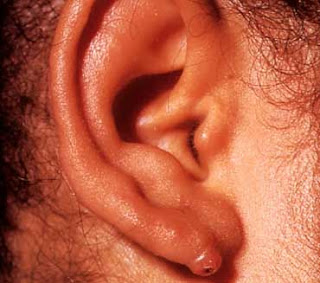What is leprosy?
 |
What is leprosy?
What is leprosy?
leprosy treatment - Leprosy may be a mildly communicable disease caused by a bacillus called leprosy bacillus (a relative of TB). It is most common in places of poverty – overcrowding and poor nutrition mean people’s immune systems are not strong and they are less able to fight the disease.
What Causes Leprosy?
Leprosy is caused by a slow-growing sort of bacteria called leprosy bacillus (M. leprae). Leprosy is additionally referred to as leprosy , after the scientist who discovered M. leprae in 1873.
What Are the Symptoms of Leprosy?
Leprosy primarily affects the skin and therefore the nerves outside the brain and medulla spinalis , called the peripheral nerves. It may also strike the eyes and therefore the thin tissue lining the within of the nose.
The main symptom of leprosy is disfiguring skin sores, lumps, or bumps that do not escape after several weeks or months. The skin sores are pale-colored.
Nerve damage can lead to:
• Loss of feeling within the arms and legs
• Muscle weakness
It usually takes about 3 to five years for symptoms to seem after coming into contact with the leprosy-causing bacteria. Some people don't develop symptoms until 20 years later. The time between contact with the bacteria and therefore the appearance of symptoms is named the time period . Leprosy's long time period makes it very difficult for doctors to work out when and where an individual with leprosy got infected.
How does leprosy spread?
The bacterium Mycobacterium leprae causes leprosy. It’s thought that leprosy spreads through contact with the mucosal secretions of an individual with the infection. This usually occurs when an individual with leprosy sneezes or coughs.
The disease isn’t highly contagious. However, close, repeated contact with an untreated person for a extended period of your time can cause contracting leprosy.
The bacterium responsible for leprosy multiplies very slowly. The disease has a mean time period (the time between infection and therefore the appearance of the primary symptoms) of 5 years Trusted Source consistent with the planet Health Organization (WHO).
Symptoms might not appear for as long as 20 years.
According to the New England Journal of drugs , an armadillo native to the southern us and Mexico also can carry the disease and transmit it to humans.
Diagnosis & treatment
Early detection and treatment of leprosy is key. If it's caught and treated quickly enough, the disease usually isn't debilitating. Typically, the medical professional will order a diagnostic test , either a skin-lesion biopsy or a skin-scraping examination, to check for leprosy.
Once the diagnosis is formed , antibiotics, like rifampin, dapsone, fluoroquinolones, clofazimine, macrolides and minocycline, are wont to kill the bacteria. The diagnosis may include more than one antibiotic. Prednisone, aspirin or thalidomide may be prescribed to control inflammation, according to the NLM. More than 16 million leprosy patients are treated with multi-drug therapy (MDT) over the past 20 years, consistent with the CDC.
People once were isolated from the remainder of the population to stop the spread of leprosy. That isn't the case today. "This is because in 1980s multidrug therapy was introduced that provided a rapid and complete cure for leprosy," said Saunderson. "Until then, folks that were diagnosed or who had symptoms of leprosy were often banished from their communities to live in leprosaria [leper asylums]. Despite this cure for leprosy, the stigma of leprosy, especially for those people that are diagnosed late and have developed visible impairments, remains considerable. Although multidrug therapy is extremely good once it's started, the period of time of leprosy is extremely long (several years), so transmission still continues before a private is diagnosed and put on treatment."
The dead bacteria can also stay within the body for several years, even after the treatment is finished. "It can take up to six years for the bacilli to be completely cleared from the body, although the bacilli are getting to be dead after just a few of doses of multidrug therapy," said Saunderson. "This explains why reactions can still occur long after multidrug therapy has been completed. We think the rationale for this is often the character of the mycobacterial cell membrane , which is extremely complex and constructed from various lipids, etc., which lollygag around and have to be removed bit by bit by the immune system."

No comments:
Post a Comment